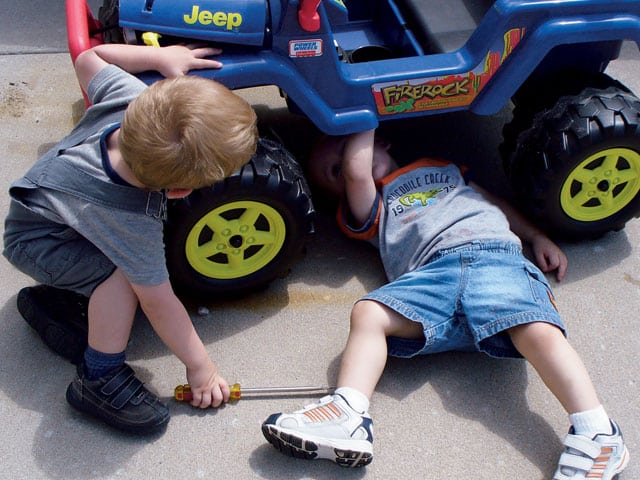On a front-wheel or all-wheel drive car, the CV axle may require replacement if the CV joint(s) have gone bad. You may also need to pull it if the car has a “shudder” that is not due to bad brakes or tire imbalance – in which case, it may be the axle weights coming loose, which you can check by hand by simply grabbing them and seeing if they move around.
Pulling the drive axle on a front-wheel drive car is relatively simple, but will require some basic tools. A tie rod puller is recommended and a good pry bar with a long handle and tapered pry end is also good to have.
Begin by lifting the side of the vehicle to be worked on and safely securing it in the air. Then remove the wheel. Note that if you do not have air tools, you can break the lug nuts loose and remove your center cap to access the castle nut and cotter pin for the axle to loosen those before lifting the vehicle.
Next, remove the brake caliper and hang it out of the way with a bungee or zip tie (so it’s not supported by the brake line). Then remove the outer tie rod end by pulling its cotter pin and castle nut and then using a puller. Note that on some vehicles, removing the caliper may not be necessary, but for the safety of the brake lines, it’s usually a good idea.
Now remove the bolts holding the strut assembly in place. Then pull the assembly off the axle (you may need to coax it with a hammer and pin).
You now have the outer tie rod end and axle away from the car. To get the inner end out of the transmission, you’ll need a good pry bar and a catch pan. Use the pry bar to carefully separate the tie rod from the transmission housing. Once it pops out, you will likely have transmission fluid running.
Pull the axle assembly out of the car. If your goal is to fix the weight, do so now. If it’s replacement, get the new one ready.
Grease the end going into the transmission with axle grease (just the tip, to the clip). Then tap the axle lightly until it “clicks” into place. If you can no longer pull the axle out by hand, it’s set.
Now replace components in the reverse order given to remove them. Once everything is back in place and tightened to spec, measure the amount of lost transmission fluid and replace with a like amount of new fluid. On an automatic, you can test the amount of transmission fluid in the system by warming up the engine and then pulling the dipstick while in park. Cycle through the gears (without moving the car) and check again. Fill as necessary with new fluid.
Test drive the vehicle and you’re done.







